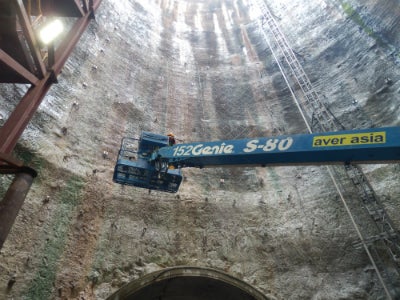
Two of Maccaferri’s rockfall products help mitigate the risks from natural hazards for the Klang Valley mass rapid transit project.
The Klang Valley Mass Rapid Transit (KVMRT) project involves the construction of a rail-based public transport network which, together with the existing light rail transit (LRT), monorail, KTM Komuter, KLIA Ekspres and KLIA Transit systems, form the backbone of the Greater Kuala Lumpur / Klang Valley region.
The first line of the Klang Valley MRT Project to be implemented is the 51km MRT Sungai Buloh-Kajang Line.
The line begins from Sungai Buloh, located to the north-west of Kuala Lumpur, and runs through the city centre of Malaysia’s capital city before ending in Kajang, a fast developing town to the south-east of the city.
About 20% of the line is aligned underground and thereby rendering tunnelling works as a major part of its construction. The line will run underground for a distance of 9.5km beneath the centre of Kuala Lumpur while the rest of the alignment is elevated. The line will have 31 stations of which seven will be underground.
The contractor was carrying out tunnelling works along Jalan Inai, off Jalan Tun Razak, which is located in the heart of the city. Inai shaft is not only the deepest but also the narrowest amongst all MRT shaft in the Klang Valley. There are two tunnels stacked parallel, one on top of the other, at about 6m distance away.
The contractor required a safety net that is strong enough to withstand debris falling from the internal drilling / boring within the upper tunnel onto the live work platform within the bottom tunnel opening. A steel working platform overhangs the top of the tunnel opening to facilitate the workings on the lower levels.
In order to prevent rockfall and hazard-size debris from falling to the lower levels, Maccaferri’s engineering team recommended a combination of two rockfall products; HEA Panel and Steelgrid® MO.
Engineered from high tensile strength steel wire ropes, Maccaferri HEA Panels are robust and tough enough to stop rocks and larger debris, whereas the smaller aperture wire mesh of Steelgrid® MO contains the smaller hazard-size debris.
All construction works were stopped while the combined rockfall meshes were installed and as a result, it was completed in less than three days.
This interesting project showed a different, but nevertheless important, application for Maccaferri products. Normally used to mitigate natural geohazard and rockfall events, the technical performance of the systems meant they could be considered for other applications where falling hazards are present.
Each train will have four carriages, allowing a total capacity of 1,200 passengers. The daily ridership is estimated to be about 400,000 passengers. Trains will run at a frequency of 3.5min.
The new line is expected to increase the use of public transport.
For more information, contact Maccaferri’s subsidiary in Malaysia.
